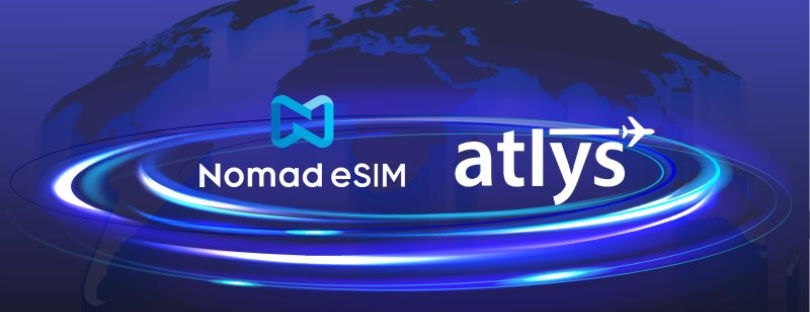Brazil’s First eSIM-Powered Tracker Launches — Links Field, Hapolo, and SIMCom Bring SGP.32 to Life
Brazil’s IoT and M2M landscape just hit a major milestone. Links Field, Hapolo, and SIMCom — three powerhouses in connectivity and tracking — have teamed up to launch the country’s first tracker featuring SGP.32 eSIM technology and 4G/2G connectivity. esim tracker Brazil
The new HP 440 model isn’t just another GPS tracker. It’s built on the latest GSMA-certified eSIM standard, SGP.32, officially rolled out in 2024 to transform IoT device management. This standard allows remote provisioning, secure operator switching, and full connectivity control—no QR codes, no physical SIMs, no technician visits.
For Brazil’s sprawling geography and industries that rely on real-time tracking—from logistics and agribusiness to fleet management and insurance—this is a game-changer.
Inside the HP 440 Tracker
At its core, the HP 440 is designed to handle Brazil’s connectivity challenges head-on. It supports 4G with 2G fallback, ensuring coverage even in rural or remote regions. With its IP65 protection, it can withstand dust and water exposure, making it reliable in the field—whether mounted on farm machinery or delivery trucks.
Under the hood, the tracker includes:
- Internal memory for 500 position logs (even offline)
- 300 mAh battery
- Compact, rugged design
- Specialized tech support and custom configuration
What makes it special, though, is its integration with Links Field’s GSMA-certified eSIM stack—a system that brings the flexibility of cloud-based connectivity management straight to the device.
Remote Management Meets Real Savings
Traditionally, IoT and tracking companies had to send technicians to replace SIM cards or troubleshoot devices in the field. With eSIM technology, all of that happens remotely.
According to Links Field CEO Thiago Rodrigues, the move to eSIM could cut operational costs by over 90%.
“We developed the HP 440 to optimize our customers’ operations — from logistics to insurance — reducing maintenance time and increasing uptime,” Rodrigues explains.
The tracker’s SGP.32 architecture allows companies to switch carriers, add new profiles, or manage thousands of devices remotely via a central management platform. This not only slashes costs but also enhances security and resilience, especially in theft-prone or high-risk environments where devices can be remotely locked or disabled.
Security and Sustainability Built In
The HP 440’s embedded eSIM removes the physical SIM slot — eliminating a key vulnerability. Without a removable chip, fraud and tampering risks drop dramatically, and remote blocking adds another layer of control.
There’s also a sustainability angle: no more disposable SIM plastics or physical logistics tied to SIM distribution. For enterprises managing thousands of devices, that’s a meaningful reduction in both cost and waste.
Matheus Vicente, commercial director at Hapolo, highlights how collaboration accelerated innovation:
“Our partnership with Links Field made it possible to bring the first eSIM tracker to Brazil in record time. It’s affordable, secure, and built for large-scale deployment.”
A Global Partnership with Local Impact
Behind the scenes, SIMCom engineers integrated the SGP.32 stack directly into the chipset, ensuring seamless communication with SM-DP+ servers — not just Links Field’s, but also those from other vendors. That interoperability is crucial: it opens the door for global connectivity while keeping full compliance with GSMA standards.
This cross-border collaboration between Asia’s engineering hubs and Brazil’s IoT market underscores a broader trend — global tech players localizing advanced connectivity solutions for emerging markets.
What This Means for Brazil’s IoT Future
The HP 440 isn’t just a new tracker; it’s a signal that Brazil’s IoT market is ready for next-gen connectivity infrastructure. While Europe and Asia have already seen large-scale rollouts of SGP.32 devices — particularly in logistics, smart agriculture, and mobility — Brazil’s entrance marks a pivotal expansion in the Latin American IoT ecosystem.
In comparison, companies like Queclink, Teltonika, and Fibocom have been leading globally with similar eSIM-enabled tracking solutions. But Links Field’s local presence and GSMA certification make this launch especially relevant for enterprises seeking national coverage and compliance.
The move also aligns with Brazil’s National IoT Plan, which prioritizes connectivity optimization and data-driven logistics as key pillars for digital transformation.
Conclusion: A Strategic Leap Toward Connected Intelligence
The partnership between Links Field, Hapolo, and SIMCom sets a precedent not only for Brazil but for the broader Latin American market. By embracing SGP.32 eSIM technology, the HP 440 offers what IoT in the region has long needed: scalable, secure, and remotely manageable connectivity.
It’s also a clear sign that eSIM for IoT is no longer a futuristic concept — it’s here, functional, and business-ready. While global players like Kigen, 1GLOBAL (formerly Truphone), and 1oT have been driving innovation in remote SIM provisioning, this Brazilian breakthrough shows how local expertise and GSMA-certified standards can converge to deliver tangible results.
In a market where logistics costs remain high and coverage gaps persist, remote connectivity management could finally tilt the balance — making IoT not just possible but practical at scale. esim tracker Brazil










